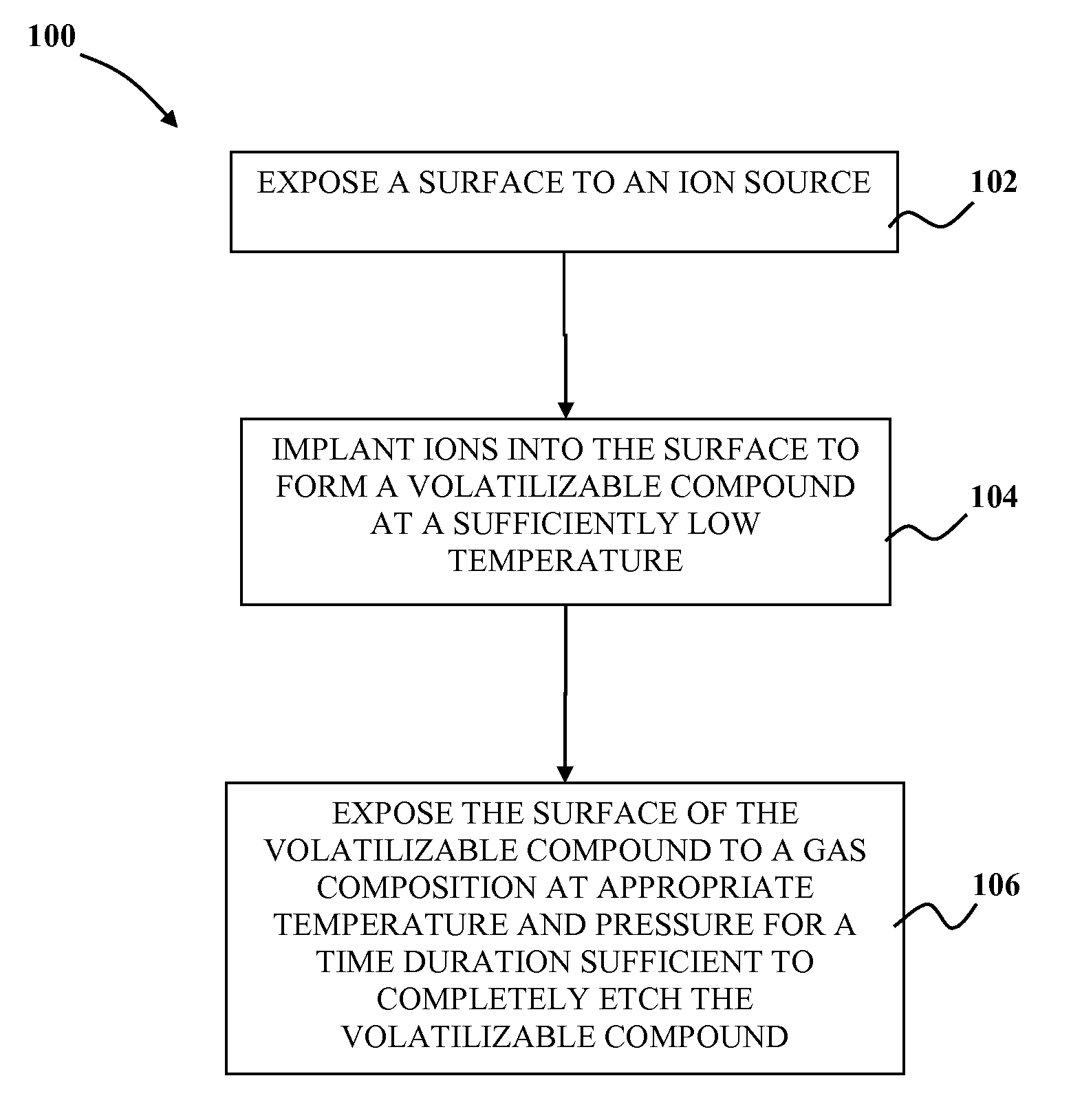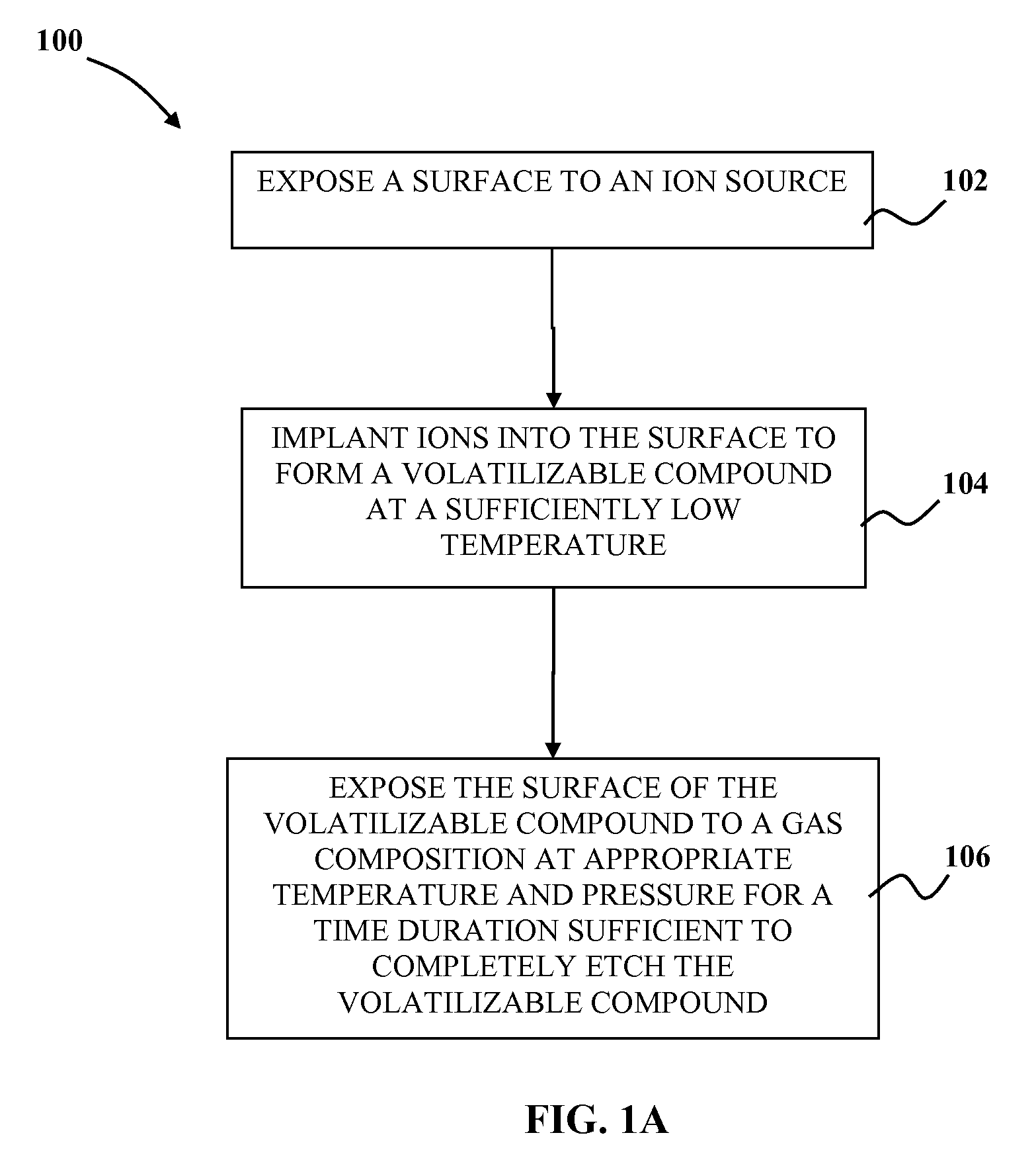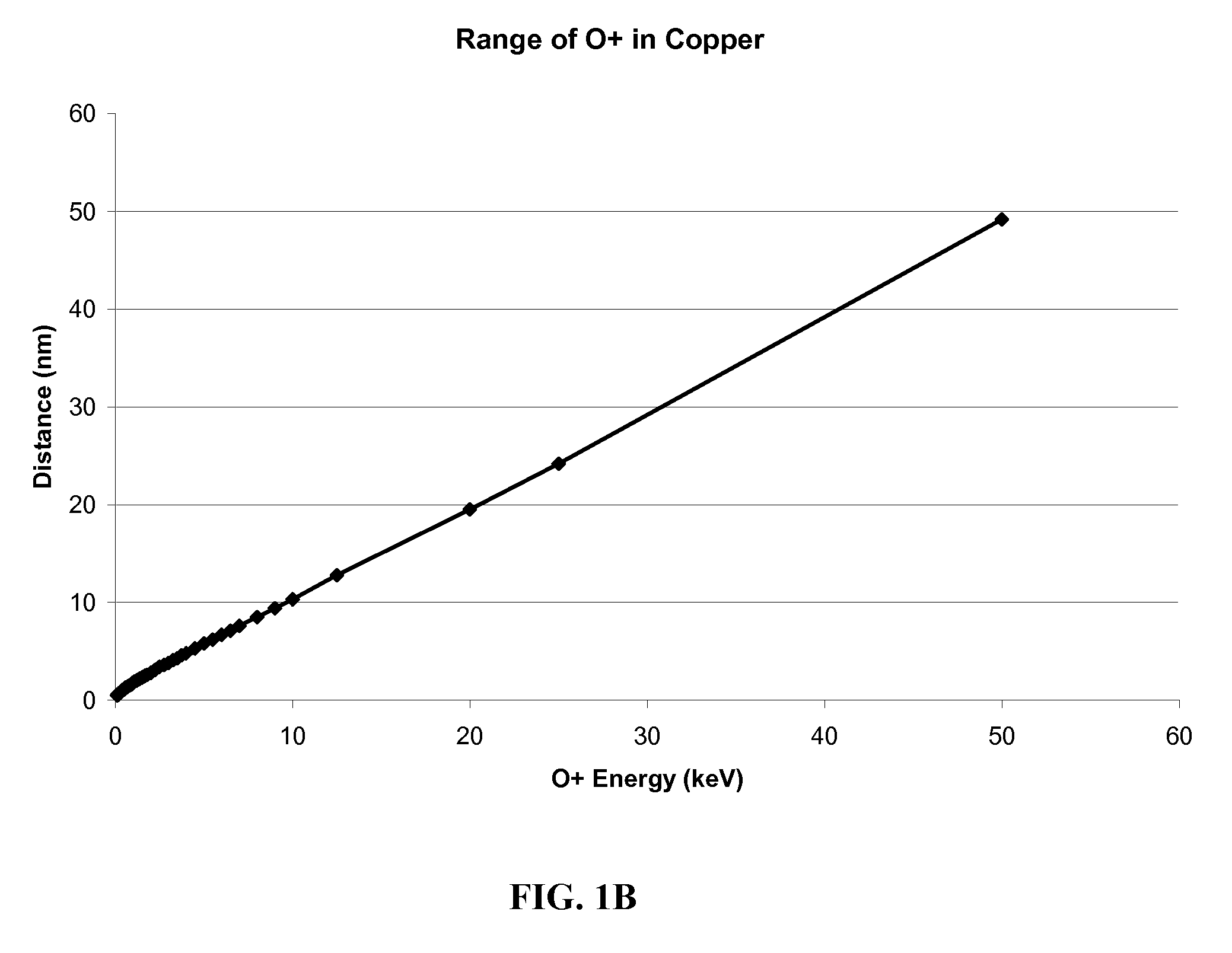Use of ion implantation in chemical etching
a technology of chemical etching and ion implantation, which is applied in the direction of photomechanical treatment, instruments, electric discharge tubes, etc., can solve the problems of non-uniform copper oxide layer, achieve high ion implantation energy, increase the rate of copper etching per etch cycle, and high ion dose
- Summary
- Abstract
- Description
- Claims
- Application Information
AI Technical Summary
Benefits of technology
Problems solved by technology
Method used
Image
Examples
Embodiment Construction
[0020] Although the following detailed description contains many specific details for the purposes of illustration, anyone of ordinary skill in the art will appreciate that many variations and alterations to the following details are within the scope of the invention. Accordingly, the exemplary embodiments of the invention described below are set forth without any loss of generality to, and without imposing limitations upon, the claimed invention.
[0021]FIG. 1A illustrates a method 100 for controlling chemical dry etching to improve smoothness of an etched surface according to a preferred embodiment of the present invention. At 102, a surface of a non-volatilizable material is exposed to an ion source. Exposing the non-volatilizable material to the ion source may involve exposure of all or nearly all of the surfaces to the ions. Alternatively only selected portions of the surface may be exposed to the ions. For example, a mask or patterned resist may cover certain portions of the su...
PUM
 Login to View More
Login to View More Abstract
Description
Claims
Application Information
 Login to View More
Login to View More - R&D
- Intellectual Property
- Life Sciences
- Materials
- Tech Scout
- Unparalleled Data Quality
- Higher Quality Content
- 60% Fewer Hallucinations
Browse by: Latest US Patents, China's latest patents, Technical Efficacy Thesaurus, Application Domain, Technology Topic, Popular Technical Reports.
© 2025 PatSnap. All rights reserved.Legal|Privacy policy|Modern Slavery Act Transparency Statement|Sitemap|About US| Contact US: help@patsnap.com



